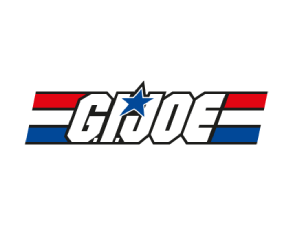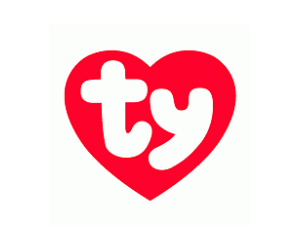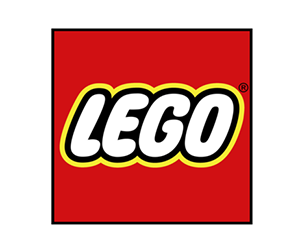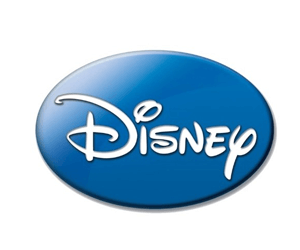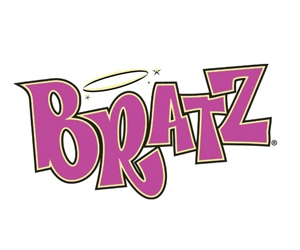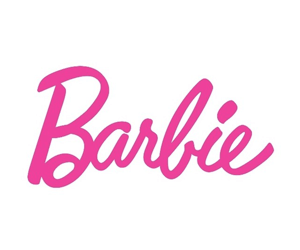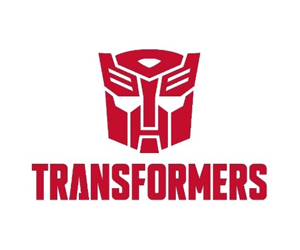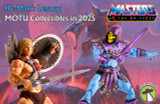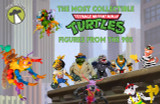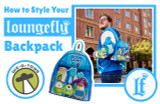Spotting Counterfeit vs. Authentic TMNT Action Figures
Teenage Mutant Ninja Turtles (TMNT) action figures have been beloved by children and adult collectors alike since the 1980s. However, with the popularity of these iconic toys, counterfeits have flooded the market.
Knowing how to spot a fake TMNT figure is important for any collector looking to build their collection. This guide will walk through what details to look for when determining if a TMNT action figure is real or a knock-off.
The key factors in spotting a counterfeit TMNT action figure are: packaging, paint application, modeling, and copyright markings. Authentic figures have high quality, consistent paint application, carefully sculpted details, and proper copyright information.
Examining the Packaging
The first place to look when evaluating a TMNT figure is the packaging.
Authentic TMNT figures will come in colorful, high-quality cardboard boxes or blister packs. The boxes will feature images of the contained figure as well as the other Turtles and supporting characters like April O'Neil or Shredder.
The TMNT logo will be bright and clearly printed multiple times. There will be an open window to view the figure inside the box.
Counterfeit figures often come in plain plastic bags or flimsy boxes without any images or logos. The plastic is thin and cheap looking. The knock-off figure inside is usually loose with no plastic or cardboard insert to keep it in place.
Checking Paint Application
The paint application on legitimate TMNT figures will be consistent and cleanly applied. The colors will be vibrant and there will be no smears or drips. Each part of the figure, like the skin, shell, belt, knee pads, etc will be painted in the appropriate color with no bleed over.
Fake figures will have sloppy paint that frequently strays over the lines. For example, green paint may drip onto the brown belt. The colors can look faded as well. The eyes may be asymmetrically painted on a counterfeit.
Authentic figures also have small, finely printed details like the turtle logo on the figure's belt. Fakes will lack these crisp details.
Examining Modeling and Sculpt
licensed TMNT figures are carefully sculpted to capture the likenesses of the characters as seen on the TV show or in the comics. Each figure will have properly shaped and sized limbs, heads, shells, and weapons. The modeling on real TMNT toys is high quality with realistic texture and detailing.
The sculpting and finish on knock-off figures is inferior. The proportions may look off with larger or smaller heads and appendages. Details like muscle definition, belt loops, and knee pads will be soft, malformed, or missing completely. The shell in particular is a good indicator - real turtles have deep sculpted lines while counterfeits look rounded and flat.
Checking Copyright Markings
Authentic TMNT action figures will contain copyright markings stamped or printed somewhere on the figure, packaging or tags. These markings indicate the company that manufactured the toy, such as Playmates, NECA, or Monogram.
The word "TMNT" along with the year and manufacturer name will typically be found on one of the feet or the shell. Other times, the bottom of the box will be stamped with a copyright. These official license labels will be absent on counterfeit toys.
Where Fake TMNT Toys Originate
Many fake TMNT products originate overseas in countries like China and Taiwan. These toys are mass produced quickly and cheaply to undercut licensed merchandise. They may be blatant rip-offs using copied molds or characters that closely resemble the Turtles.
These bootleg figures then get imported to the US and other countries and sold online or at discount stores. They are often found at flea markets, county fairs, and secondhand shops, taking advantage of parents or collectors not as familiar with spotting official TMNT goods.
Protecting Yourself from Buying Fakes
Here are some tips to avoid spending money on counterfeit TMNT figures:
- Carefully examine listings and product photos looking for red flags like low prices or stock images.
- Read seller reviews and only buy from reputable vendors.
- Ask the seller directly about authenticity and licensing.
- Thoroughly inspect the item upon arrival before leaving feedback.
- Price check - if a deal seems too good to be true, it often is.
- Consider professional authentication services for rare or expensive figures.
- Stick to trusted brands like Playmates and NECA when possible.
Should You Keep or Toss Fake Figures?
If you unfortunately receive a knock-off TMNT toy, you have a couple options. Some collectors keep counterfeits for curiosity or completeness. However, most fans advise disposing of them to avoid resale and trademark infringement.
You can try to return the fake to the seller for a refund if they misrepresented the item as official. Otherwise, tossing it in the trash ensures it won't end up circulating again. Don't donate or gift counterfeits as it spreads the problem and deceives others.
While fake Ninja Turtle toys may look neat, purchasing them supports illegal bootleg factories. Collectors are better off being patient and finding authentic TMNT action figures from trustworthy sources. Then they can proudly display the real deals with their fellow fans! Turtle power!
Common Counterfeit TMNT Figures
To spotlight what fake TMNT figures look like, here are some commonly bootlegged action figures targeted to deceive collectors:
Movie Star Turtles
These low quality knock-offs try to mimic the 1990 movie line. The vibrant green skin, signature weapons, and unique shell sculpts help identify them. However, the paint is sloppy and facial features lack detail. The plastic quality feels cheaper too.
Pizza Tossin' Michelangelo
This popular 1989 toy featured Michelangelo spinning his nunchucks to fling plastic pizzas. Fakes try copying the unique mechanism but the pizzas look shoddily molded and painted. The overall sculpting and quality is also inferior.
Muckman
Part of the 1988 Mutations assortment, Muckman has a distinctive trashy, cobbled together appearance. Fakes tend to miss the subtle texturing and paint that brings this messy mutant to life. The eyes often look off and the trash stuck to him is missing.
Rocksteady and Bebop
Shredder's mutant warthog and rhino henchmen are another prime target. Fakes lack the muscle definition and menacing expressions of the real Super7 and NECA figures. The clothes and accessories are also lower quality.
TMNT Movie Stars
This early 1990s line featured the Turtles in unique outfits. Counterfeits mimic the clothes and accessories but with inferior modeling, paint application, and overly simple sculpts. They come on plain bubble cards lacking the proper TMNT design and logo.
Spotting Fakes for Other TMNT Toy Lines
While this guide focused specifically on action figures, many other Ninja Turtles toy lines have experienced counterfeits including:
- Plush Figures - Fabrics feel cheap; colors faded; stitched details sloppy.
- Vehicles - Low quality plastic; missing decals and textures; poorly made rolling wheels.
- Playsets - Flimsy overall construction; modeling lacks detail; stickers placed sloppily.
- Roleplay Gear - Weapons like plastic sai feel light; rubber masks have strong chemical smells.
The same scrutinizing principles apply when inspecting these other toy types - analyze the materials, sculpting quality, paint application, moving parts, copyright markings etc. Top notch engineering and design is expected from official Playmates, Flair, and NECA products.
Authenticating Rare and Valuable Figures
As TMNT action figures grew in popularity through the late 80s and early 90s, certain figures have become quite rare and valuable to collectors. Early production runs, special editions, prototypes, and uniquely packaged figures can now fetch hundreds or even thousands of dollars.
Naturally, these rare figures are prime targets for sophisticated counterfeiting operations trying to cash in on their value. Extra scrutiny is required when evaluating the authenticity of expensive and hard-to-find TMNT toys.
One line targeted by fakes is the 1989 "The Secret of the Ooze" movie tie-in figures packaged on blister cards featuring unique cloud backgrounds. These command higher prices and have been extensively faked. Carefully check that the plastic bubble isn't flimsy, the cardback colors aren't faded, and the figure inside matches what is pictured on the packaging.
The original 1988 release "softhead" figures are also knocked-off due to their short initial run. Check that the head feels appropriately soft and rubbery for this exclusive variant. Examine the eyes and bandana sculpting as well since fakes tend to lack the finer details.
When preparing to spend significant money on rare TMNT items, consider third party professional authentication services. Reputable authenticators evaluate the toy in person and provide a certification of authenticity. This provides peace of mind for expensive investments.
At minimum, thoroughly vet any high priced vintage toys through seller reviews, restoration signs, multiple photos, and deep background research. With rare finds, patience pays off to ensure you're buying official TMNT history.
Regional Knock-Offs
An interesting subset of TMNT figure counterfeits originate from different countries attempting to profit from the Turtles craze decades ago. These unauthorized foreign figures add unique diversity to some collections.
The Brazilian "Tartarugas Ninjas" figures made by Glasslite in the early 90s are a frequently faked oddity for collectors. They came in redesigned retro style packaging often in different color schemes than the American releases. The Brazilian font gives their bootleg origin away.
Argentina also produced unlicensed La Tortugas Ninja figures by the Papelera Roc company. These came on cards with dynamic red backgrounds and Spanish names like "Michangelo". The sculpts were also altered slightly with more cartoony looks.
In Mexico, HK Toys created Ninja Turtles inspired "Las Tortugas Mahabe" figures that resembled their American counterparts without using copyrighted names and logos. However,
knock-offs will still display TMNT.
While fascinating, purchasing these unlicensed foreign figures technically violates trademark law. But they remain collectible for their uniqueness in interpreting the Turtles craze globally.
Accessories from Third Party Companies
A variety of companies besides Playmates jumped in to produce TMNT related accessories back in the day. While some were officially licensed for a time, many simply stole the Turtle likenesses.
The Spanish company Bel Ferr produced mini rubber heads touted as erasers in the early 90s emblazoned with the TMNT logo. However, they never had an actual license agreement with Playmates. Knock-offs mimic these unauthorized items.
Dik Tac even made a slime-squirting pen in the late 80s that infringed IP by using the TMNT name and Turtle illustrations. Counterfeits try copying this novelty item.
Other examples include fake Turtlehead rings from Cardinal International and coloring books from Modern Publishing.
When evaluating these TMNT inspired vintage goodies, research whether the company actually secured proper licensing or simply jumped on the profitable Turtle bandwagon illegally. Bootlegs keep replicating these unlicensed products.
The High-End Collectibles Market
In recent years, the Teenage Mutant Ninja Turtles have enjoyed a major resurgence in popularity due to retro nostalgia and new TV shows and movies. This has birthed a lucrative high-end collectibles market around the brand.
Companies like NECA, Mondo, Super7, and Good Smile have partnered with Nickelodeon to release limited edition collectible TMNT items like finely detailed action figures, statues, prop replicas, and decoration pieces aimed at adult fans with disposable income.
These exclusive high-priced items are ripe for counterfeiting. Fake collectibles are created using inferior materials, cheaper molds, and lower quality manufacturing processes. They'll then get sold through shady websites and dealers under the guise of being authentic.
Meticulous inspection of the product and packaging is required, along with researching reputable sellers, to avoid being duped. Consulting collectors is also wise since knock-offs tend to widely miss the mark in mimicking top-notch limited releases.
With TMNT's huge resurgence, both fans and fakers have come out of the shadows, making diligence collecting modern high-end offerings a must.
Conclusion
Spotting knock-off Teenage Mutant Ninja Turtles toys takes a keen eye, but collectors can confidently identify fakes by looking for inferior quality and lack of authentic copyrighted branding.
When examining a figure, packaging, paint, sculpting, and copyright marks are telltale signs of genuine vs counterfeit origin.
Avoiding cheap imitations means helping fans acquire and display prized TMNT collections built from real licensed merchandise. With proper vigilance, fans can stick to the genuine articles that made playing with the Turtles such an important part of childhood for so many.
Frequently Asked Questions
Are counterfeit toys illegal to purchase?
Technically yes, buying counterfeit products is illegal as it supports trademark infringement. However, the onus is usually placed on the sellers rather than buyers. Still, knowingly purchasing fakes violates intellectual property law.
Can I donate or resell fake TMNT figures?
No, you should not donate or resell counterfeit toys as they can trick and disappoint the next owner. Safest bet is to dispose of known fakes so they don't recirculate.
What if I buy a fake TMNT toy unknowingly?
If you purchase a counterfeit by accident, you can try to get a refund from the seller. Leaving negative feedback also warns others. Dispose of the toy so it doesn't continue circulating.
Do fakes affect the value of real TMNT toys?
Mass produced fakes flooding the market can drive down resale prices for genuine toys. Bootlegs also muddle the collectible landscape for fans and potential buyers.
Are the new TMNT toy lines being faked too?
Unfortunately yes, new Playmates and NECA TMNT toy lines are being counterfeited. Modern collectors must be just as cautious about buying knock-offs.
Is there a difference between "fake" and "custom" figures?
Yes, fakes try to identically copy real toys while customs are modified figures made by fans as art projects. Most customizers avoid outright copies.
Where are fake TMNT toys typically manufactured?
A large portion come from China and Taiwan where lax IP laws allow mass production of bootlegs. They then get imported and sold in western countries.
Can fake toys be dangerous?
Potentially yes if they contain high lead levels in paint or small detachable parts that pose choking hazards for children. Quality and safety standards can be non-existent.
Recent Posts
-
He-Man’s Legacy: MOTU Collectibles in 2025
The Masters of the Universe (MOTU) franchise, led by the iconic He-Man, has left a powerful legacy i …Aug 26th 2025 -
Collectible TMNT Figures from the 90s
The Teenage Mutant Ninja Turtles exploded onto the scene in the late 1980s, and by the 1990s, they w …Aug 26th 2025 -
How to Style Your Loungefly Backpack
Loungefly backpacks are more than just practical accessories—they’re fashion statements, fandom show …Aug 26th 2025





















